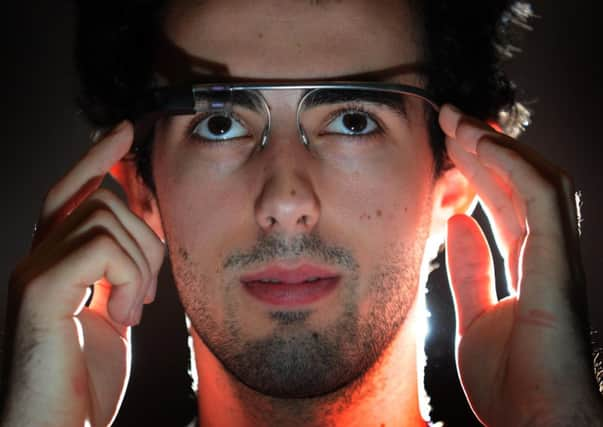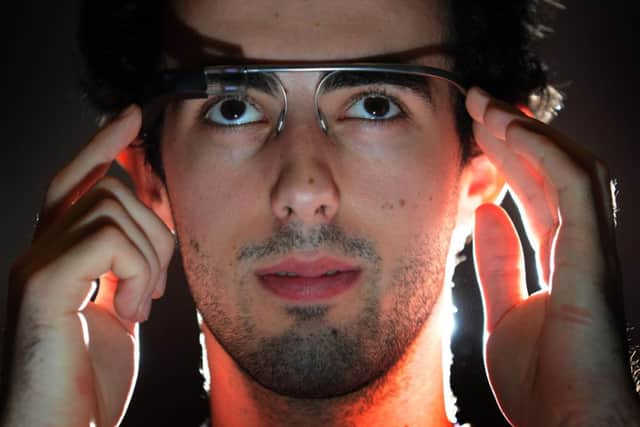After the mobile phone, comes the Glass


In front of my eyes appears a picture of the Eiffel Tower and the answer: 1,063 ft or 324 metres. I’m using Google Glass, the latest in smart technology – a wearable computer system which allows you to browse the web without using your mobile or a computer.
It looks like something out of a science fiction film but it is being hailed as a possible replacement for mobile phones.
Advertisement
Hide AdAdvertisement
Hide AdAlthough it is not commercially available yet, Google Glass is used by a limited number of Google employees, developers and a few thousand people from the Google Glass Explorer programme.


Sam Heather, a second-year computer science student from York University, has one of the few pairs of glasses available in the UK after he took an internship at Google headquarters and was chosen to be part of the testing phase.
He showcased the device during science and technology expo Venturefest Yorkshire at York Racecourse.
The glasses are most useful for viewing bits of information. Browsing is done through either voice recognition or by using the touch pad on the side of the glasses.
Advertisement
Hide AdAdvertisement
Hide AdHeather, 20, wears the device every day and uses it to find information for his coursework. “If I want to refer to a diagram, I can raise my head, open up an application or swipe down the side of the glass and find the image I want,” he says.
They are designed to be used in short bursts and, according to Heather, the battery lasts about a day and a half. “That’s because the screen is on for about 10 seconds an hour. That’s all you need it,” he says. “You wouldn’t use them to watch a film because the battery would be dead before you’d finished watching the opening credits.”
I decide to ask the glasses for directions to York Minster. A map appears and the perspective changes when I turn my head. It’s like a 3D version of sat nav, although I imagine it would be easy to bump into things if you were walking down the street.
Heather nods. “I have walked into bollards wearing the glasses,” he admits.
Advertisement
Hide AdAdvertisement
Hide AdThe glasses also have a word lens. Users can point the glasses at a foreign sign to translate it live on screen. “You will literally see the same sign with English text on it,” he says. “You can get that on iPhone as well, but it’s particularly good on glasses.”
The glasses have sparked concerns about covert filming and privacy but Heather believes it’s not as big an issue as some people fear.
“It’s actually much more obvious when you’re filming with Glass than with a mobile phone because you’re either talking into it or pushing the camera button,” he says.
“The screen lights up with different colours so everyone can see what you’re doing.”
Meanwhile, Heather has developed an app to help people with Aspergers Syndrome and Dyspraxia solve time management issues while using the glasses.